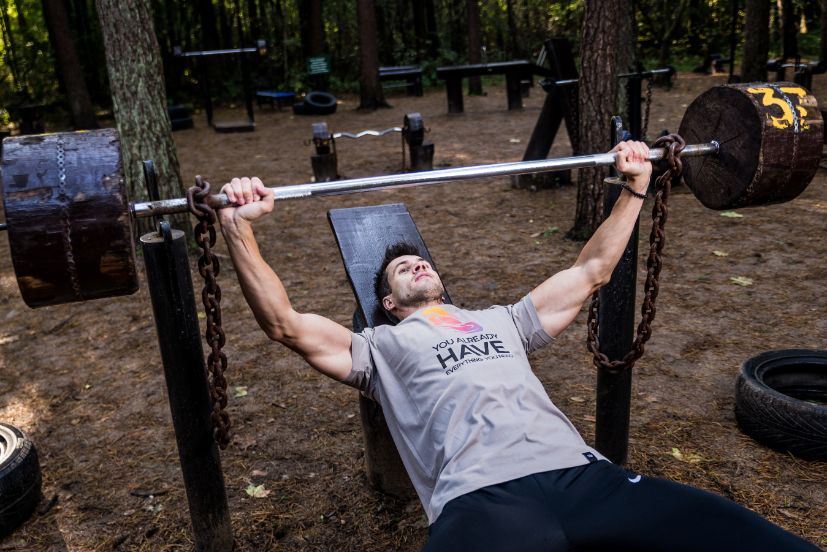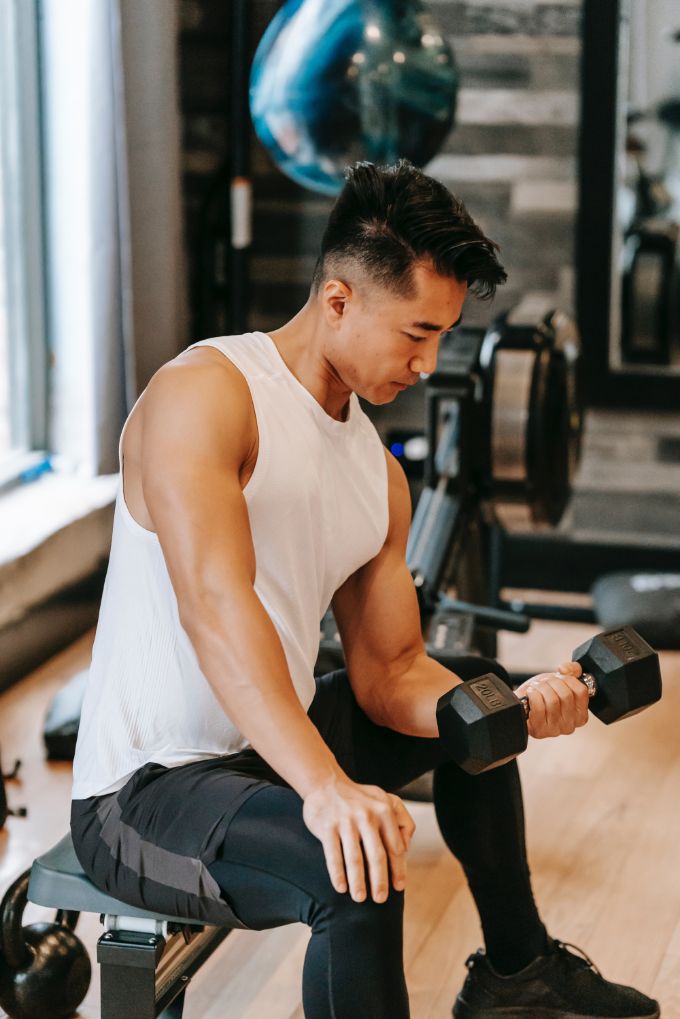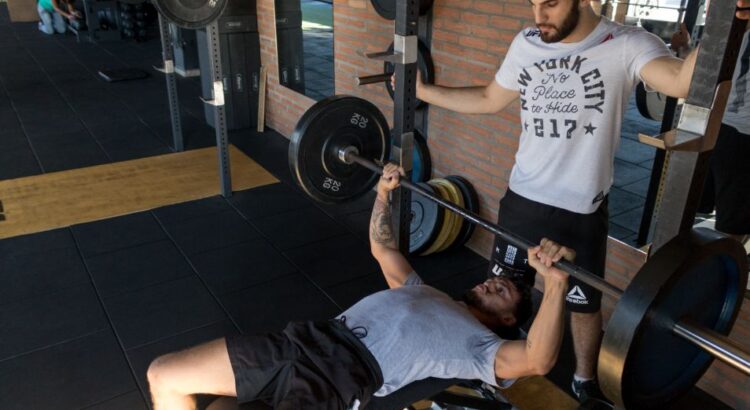Before adding more weight to your bench press, are you properly warmed up? Increasing core temperature, facilitating the muscles that will be used during the movement, and priming the nervous system to maximize force output are all components of an efficient Bench warmup.
You’ve come to the right place if you’re looking for bench pressing-specific warm-up exercises.
General Warm-up
You may already have an idea of what a general full-body warm-up entails and its intended use. The best way for them to prepare for their favorite workout may have already been discussed with you if you recently joined a gym.
However, it’s crucial to comprehend the science behind how a strong general warm-up can significantly improve the efficacy of your other workouts.
The general warm-up’s main goal is to increase your body’s core temperature. This frequently denotes a certain amount of cardio exercise and an increase in heart rate.
Imagine what a better, more intense warm-up could do for you in this situation where a low-intensity warm-up only resulted in “breaking a light sweat.” For us, the best warm-up is 15 minutes on the rower or stationary bike.
If you feel that you have not sufficiently increased your core body temperature levels, you could even combine the two.
Even if you decide not to do the full 15 minutes, you should still try to fit in at least 5 minutes because it can still affect your performance and endurance. An investigation by Wilson et al. provided evidence of this.
Just keep in mind that the general warm-up is essential for pretty much any exercise if you are just starting out with bench pressing. The most typical rookie error made by new bodybuilders is skipping the general warm-up.
This can result in unwarranted injury or more soreness than would otherwise be the case. So always keep in mind to squeeze in those crucial 15 minutes.
Mobility Drills For Bench Press
The blood flow to your muscles is increased and motion is restored by performing mobility drills.
By applying pressure to the muscle with a foam roller or lacrosse ball, mobility drills are carried out using self-massage therapy methods.
A tight muscle restricts joint mobility. Every workout in the gym calls for a certain amount of mobility. You must be able to move your shoulders and thoracic spine freely in order to fully extend the bar during a bench press.
It’s crucial to understand that using self-massage therapy techniques while performing mobility drills will only momentarily restore motion. The benefits of foam rolling (from a range of motion perspective) don’t last, but you can increase the range of motion for a particular workout.
In order to improve your mobility over the long term after your workout, you will therefore need additional interventions (like static stretching) (Peacock et al., 2014).
In fact, many athletes actually overdo this portion of the warm-up and spend far too much time performing mobility drills. My advice is to choose one to three of the exercises below, apply pressure to the muscle, and then perform five to ten strokes for 60 to 90 seconds. Throughout the process, feel free to select various mobility exercises.
- Lats: Your first move should be to lie sideways on the foam roller. Then, you should exert pressure on your lat muscle. The areas that you feel are the tightest should be rolled the most.
- Pec Major: Due to the pec major’s size, you should make sure you target all of the potential tight spots. Starting closer to your shoulder, roll the foam roller inward toward the body’s midline.
- Pec Minor: Doing this mobility exercise on the floor will allow you to exert more pressure on your pec minor, which is located beneath your armpit.
- Thoracic Spine: Start by flexing and extending the foam roller on the upper and middle back. You can also exert pressure on the erector spinae as an additional exercise. Your erector spinae are located on either side of your spine.

Dynamic Stretching For Bench Press
There are several benefits to dynamic stretching.
Your muscles’ ability to function better when you are lifting will be enhanced by their ability to lengthen them. You may already be aware of the benefits of stretching, but many people are unaware that there are two different types of stretching: dynamic stretching and static stretching.
The primary distinction between them is that while you hold your muscles in a range of motion for a set amount of time (usually 30 to 60 seconds), you move your muscles in and out of that range of motion repeatedly during dynamic stretching (typically 15 to 30 times).
Activation Exercises For Bench Press
Exercises that activate the smaller muscle groups that support the prime movers help to keep them stable.
The chest, shoulders, and triceps are the main muscles involved in bench pressing. The upper back and rotator cuff, however, contain a number of smaller muscle groups that support stabilization and enable the prime movers to perform at their highest level.
In order to get the most out of the main workout, we need to prime these stabilizing muscles.
I advise choosing 1-2 exercises from the list below and performing them in 1-2 sets of 10-15 reps. Feel free to alternate between different activation exercises over time, but make sure you move slowly through the range of motion to avoid overcompensating for the larger muscle groups.
Band Pull Apart
For this specific upper body exercise, you will want to use a resistance band that you will be able to handle for 2 to 3 sets of 10 to 20 repetitions. In order to complete all the sets and repetitions, you should avoid selecting a resistance level that is too difficult.
The band should be held with an underhand grip at shoulder height and slightly wider than shoulder width. Keep your arms long and only slightly bent at the elbows. You should maintain a slight bend in your knees and stand with your feet hip-width apart.
Ensure that you are standing tall, with your shoulders over your hips, and with your head and neck in a neutral position.
Prone Trap 3 Raise
On an inclined bench, you will first lie on your chest. The next step is to grab a pair of light dumbbells and hold them at your sides with your elbows slightly bent. Lift the dumbbells up and outward to perform the exercise.
Finish the exercise by forming a “Y” shape with your body, with your arms at the top.
Scapular Push Up

You must set up a high plank position before performing the scapular push-up. This calls for keeping your feet together and placing your hands under your shoulders. Strictly maintain a straight body. Then, while being careful not to bend your elbows or lower your hips, press your chest out and pinch your shoulder blades together.
Additionally, remember not to tuck your chin or tilt your head forward. Simply concentrate on pinching your shoulder blades together the entire time because this isn’t a push-up and you’re only moving through a very small range of motion.
In order to return to your original position, you must first let your muscles relax. For the duration of this exercise, your core must remain tight.
Wall Slides
These may be names you are familiar with. They are actually a really good and helpful exercise, as your teacher may have mentioned when you performed them in PE. You accomplish this by using your back while standing straight up against the wall. Ensure that the distance between your feet is shoulder-width.
In order to press your shoulders into the wall, you must raise your arms. Your hands will be up against the wall, specifically the backs of your hands. Your thumbs should be at the same level as your head. The floor should be parallel to your upper arms.
Once your knees have begun to bend, you can begin to slowly slide your body down the wall. Slide as much as you can until your knees are at a 45-degree angle. You run the risk of straining your knees unnecessarily if you descend any further.
DB Serratus Pullover
You need a dumbbell in each hand for this exercise. Then you should cross your arms over your chest. Make sure your elbows are slightly bent and soft, and that your palms are facing one another. And finally, take a deep breath before beginning to raise the weights above your head.
Pull your arms back to the starting position after remaining in this position for three to four seconds. During this exercise, your back and core should be strong, and your elbows should remain flexible.
Read More:
